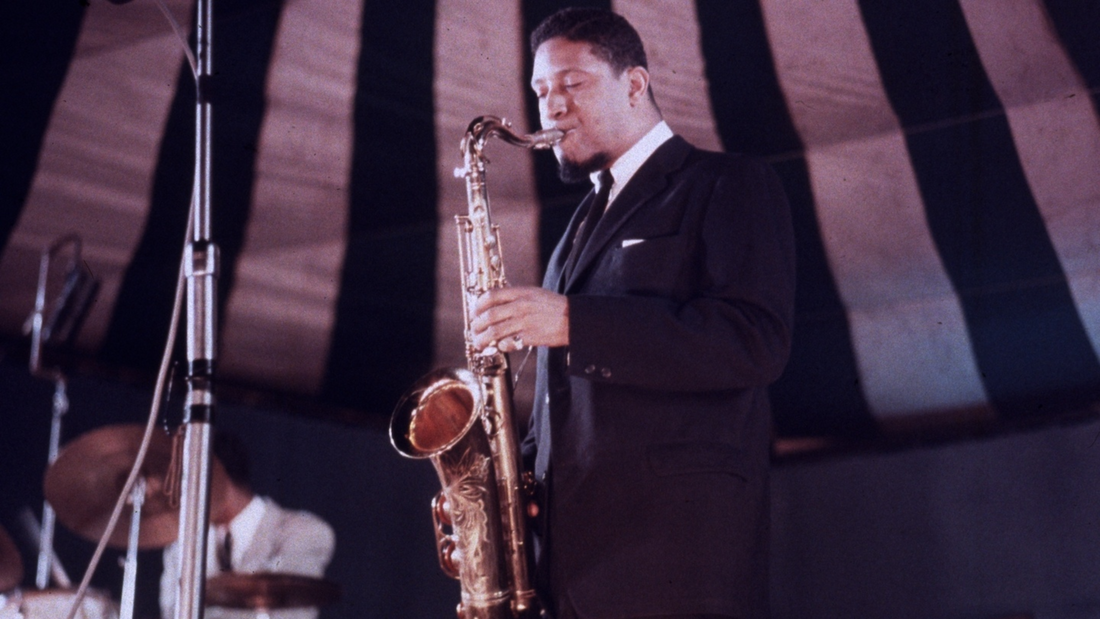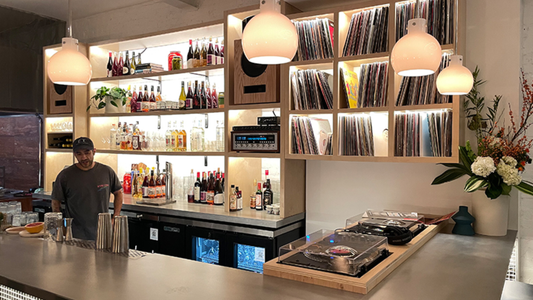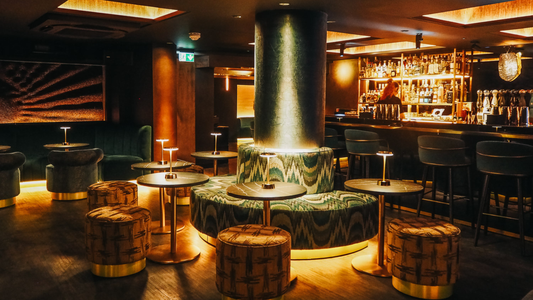
New York, Blue Note, and the Echo of Japan
By Rafi Mercer
New York has always sounded different. The city hums at a frequency of its own, restless yet precise, a place where noise becomes rhythm and rhythm becomes culture. Nowhere is this truer than in its relationship with jazz, and no label carried that sound into permanence more powerfully than Blue Note Records. Founded in 1939 by Alfred Lion and Francis Wolff, two German émigrés with ears tuned to modernism, Blue Note captured New York’s pulse and gave it form. From Thelonious Monk’s angular phrasing to Art Blakey’s thunder, from Horace Silver’s precision to Wayne Shorter’s lyricism, the label defined what jazz could be.
To walk the city with Blue Note in your headphones is to layer history over geography. The subway becomes syncopation, the streets a walking bassline, the skyline a horn line rising in brass. Blue Note made New York audible to the world, not as abstraction but as vibration. Its records were not just documentation but atmosphere. And its covers, with Reid Miles’ typography and Francis Wolff’s photography, turned vinyl into visual modernism — sleeves that felt as architectural as the music they framed.
Yet Blue Note’s story is not only New York’s. In Japan, thousands of miles away, another layer was added. Japanese vinyl pressings became renowned for their fidelity, their attention to detail, their obsessive devotion to craft. Records that had long gone out of print in the United States were reissued, pressed on heavier stock, mastered with precision that revealed details even American originals sometimes blurred. Collectors speak with reverence of those Japanese Blue Notes — the OBI strips intact, the paper thick, the sound immaculate. They were not just objects but artefacts, reminders that listening could be as much about devotion as about access.
This devotion found its ultimate expression in the Japanese kissa, those small cafés where imported records were played on colossal systems, filling the air with fidelity unavailable at home. In the 1950s and 60s, Japanese students sat in reverent silence, discovering New York jazz through Blue Note pressings, absorbing not only the music but the discipline of listening. The rooms became schools, sanctuaries, places where sound was treated with seriousness. And in those sanctuaries, the spirit of New York lived on.
It fascinates me how this trans-Pacific echo continues today. In Tokyo, listening bars still spin Blue Note originals and Japanese reissues alike. In Paris, selectors drop Grant Green into a midnight set. In New York, new bars borrow the kissa model, reminding locals that silence can be as radical as volume. What began in New York clubs and was pressed into vinyl in Japan now circulates globally as a culture — one that insists on depth, patience, and presence.
I think often of the Village Vanguard in this context. It is one of the most hallowed rooms in jazz, a basement on Seventh Avenue where history still breathes. I got engaged in a restaurant opposite the club — it seemed like the right thing to do, a moment tied to music without words. To propose in that spot was to acknowledge that some commitments are as deep as listening itself, that life, like music, unfolds best when you give it time. The Vanguard is more than a venue; it is an emblem of permanence, of intimacy, of sound lived at close quarters. It is no coincidence that so many Blue Note live albums were recorded there, capturing the atmosphere of that room, its warmth, its unrepeatable detail.
Blue Note remains an anchor because it combined two qualities rarely balanced: precision and soul. Its records sound alive, urgent, vital, yet they are also crafted, engineered, tuned for fidelity. That duality is what Japanese collectors and listening bars seized upon — the idea that music could be both emotional and exact, raw and refined. To listen to a Japanese Blue Note pressing in a Shibuya basement today is to feel the full loop of culture: New York’s energy pressed in Tokyo, returned as ritual, heard again with new ears.
The resurgence of vinyl globally makes this loop even stronger. In an age of streaming, where playlists flatten history and albums dissolve into fragments, vinyl reminds us of continuity. To put on a Blue Note record is to commit to forty minutes of atmosphere, to sit with detail, to hear not only the notes but the grain, the hiss, the room. It is a form of slow listening, a discipline that resists the skimming logic of digital. And it is in listening bars, from London to Berlin, that this slow culture finds public form.
The business of vinyl is booming again, but its power is not only economic. It is cultural, architectural, atmospheric. It shapes how we listen and how we value music. The fact that Japanese pressings of New York jazz are prized objects tells us something important: that music travels not just as sound but as practice, that the way it is recorded, pressed, and shared matters as much as the performance itself. Blue Note in New York, vinyl in Japan, listening bars across the world — each is a layer in the same story, a story of how music endures when treated with care.
To walk the streets of New York today is to still feel that hum. The clubs remain, the records remain, the resonance of Blue Note remains. But to sit in a listening bar in Tokyo, or to pull a Japanese Blue Note pressing from its sleeve, is to realise that the city’s sound has outgrown its geography. It belongs everywhere now, carried in grooves, replayed in silence, shared across generations.
When I think back to that night outside the Village Vanguard, I remember how music had already shaped the moment before a note was even heard. That is the gift of sound when treated seriously: it saturates life, it tunes memory, it makes decisions feel inevitable. Blue Note captured that gift, Japanese vinyl honoured it, listening bars continue it. And in the end, it is not only about New York or Tokyo, but about all of us — learning again how to listen, one side at a time.
Rafi Mercer writes about the spaces where music matters. For more stories from Tracks & Tales, subscribe, or click here to read more.







